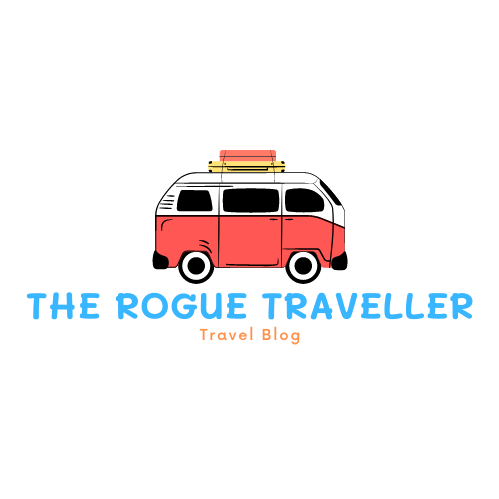VANCOUVER, BC – Destination Canada has announced the launch of four new tourism corridors for 2024, building on the success of last year’s pilot Tourism Corridor Strategy Program.
The Tourism Corridor Strategy Program aims to contribute to a more resilient tourism industry through accelerated destination development of multiple corridors across Canada.This program crosses provincial and territorial boundaries, bringing together tourism organizations to develop iconic new journeys for travellers to explore. This program is a key initiative of Destination Canada’s 2030 Tourism Strategy with its bold goal to propel Canada back into the Top 7 global tourism destinations.
The new tourism corridors are:
1. Cycle Ontario and Quebec (Ontario, Quebec)
This corridor will connect existing bike routes within Ottawa, Cornwall and Montreal and develop new routes in collaboration with local organizations to highlight tourism offerings.
Cycle Ontario and Quebec will connect local businesses, artisans, and Indigenous groups, ensuring the benefits of tourism reach everyone involved.
The corridor will offer accessible year-round routes, bike-friendly amenities, and opportunities for physical activity, all while promoting mental wellness and reducing environmental impact.
Cycling tourism is growing in Canada and represents significant potential. According to data from Velo Quebec, cycling tourism in Quebec produces:
$700 million annually in tourist spending
Over 7,000 jobs which are related to cycling tourism
1.6 million nights which include cycling during the stay
700,000 tourists stays with cycling activity
2. Field to Fork: Saskatchewan Manitoba Agritourism (Saskatchewan, Manitoba)
As one of the largest and most productive agriculture regions in the world, Manitoba and Saskatchewan are primed to become global agritourism leaders.
As Destination Canada’s first-ever corridor that includes a culinary focus, Field to Fork will be developed with support from the Culinary Tourism Alliance with major gateway cities including: Winnipeg, Brandon, Saskatoon and Regina.
Visitors can gain a greater understanding and awareness of where our food comes from in Canada through farm-to-table culinary experiences, educational workshops, Indigenous agritourism and festivals. Agritourism also provides an opportunity for those attending business related meetings or conventions to learn about industrial processes, their impact on society and the environment, and their role in shaping the economy.
Destination Canada’s research underscores that trying local food and drink is the most frequently desired travel activity among global travellers (Global Traveller Research Program 2023).
3. Northern Sky Corridor (Alberta, Northwest Territories)
This corridor connects Edmonton, Alberta as the gateway to the Northwest Territories, celebrating the region’s rich cultural heritage, art, and experiences set amongst expansive natural beauty.
This corridor connects to Canada’s north, where the demand for experiences exceeds supply. The development of this corridor will identify product gaps, explore transportation partnerships, and identify infrastructure needs to support the creation of new itineraries.
According to Destination Canada’s 2023 Global Traveller Research Program: 67.7% of international travelers to Canada are very interested in experiencing an Indigenous cultural experience or tourism activity in Canada.
4. Juan de Fuca Corridor (British Columbia, Washington State, USA)
This corridor area is a partnership with the Pacific Northwest Economic Region (PNWER), which focuses on increasing economic well-being and quality of life for residents while maintaining and enhancing the natural environment.
Juan de Fuca Corridor capitalizes on destination development strategies that have been completed and focused on required investment for future attraction and resiliency.
This is the first corridor to cross into the United States, offering new opportunities to engage with Canada’s largest international market.
The US is Canada’s largest international market. In 2025, 16.2 million travellers from the US are expected to visit Canada and spend $13.7 billion, according to Destination Canada’s 2024 USA Market Highlights.
The Tourism Corridor Strategy Program will enhance Canada’s appeal by providing visitors with compelling reasons to explore new regions, thereby strengthening Canada’s tourism sector.
The selected corridors are defined as high-potential and align with criteria such as:
Identifying potential job opportunities
Potential for Indigenous inclusion or partnerships
Employing a regenerative approach
Engaging local communities
Supporting economic growth
Catalyzing investment attraction
“Tourism contributes to the wealth and wellbeing of all of Canada and community is at the heart of the Tourism Corridor Strategy Program. Alongside our regional partners, we work directly with local, grassroots organizations to create long-term destination development strategies, and identify the products, services, workforce, access, infrastructure and experiences required to both delight visitors and enrich the lives of locals,” said Marsha Walden, President and CEO, Destination Canada.
“To stay competitive, Canada needs exceptional travel itineraries and experiences that reflect the essence of our country. To create them, we must attract strategic investments — from the private sector and all levels of government – that grow tourism in alignment with the interests of travelers and communities’ broader goals.”
The article Destination Canada announces four new tourism corridors for travellers first appeared in TravelDailyNews International.

+ There are no comments
Add yours